Now you’ve done it. In an aspiration to use your “free” time to reinvent your body and health, you’ve jumped in a bit too hard. Ouch. Even seasoned athletes occasionally reach that point of no return. That straw that breaks the runner’s (or cyclists, or swimmer’s, or tennis player’s- you get it) back. It happens to us all at some point. But knowing your next steps can be the difference between reverting to the couch position and getting back to the activity you love. (Or want to love!) Here are my Top PT Tips or remedies for when you overdo your exercise routine.
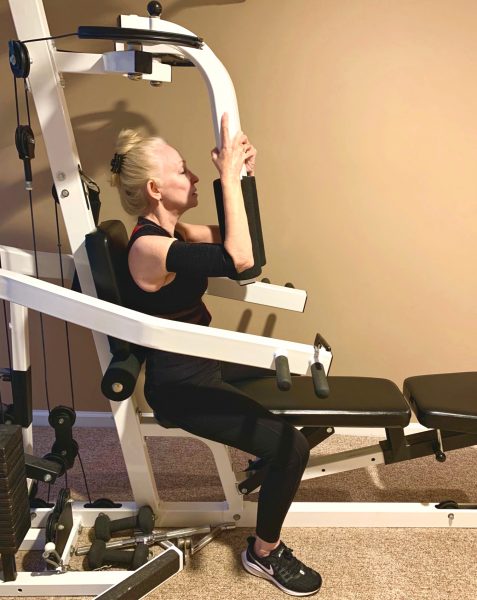
OVERUSE INJURIES
You may be familiar with tennis elbow or runner’s knee. Both are colloquial terms for overuse injuries. Johns Hopkins describes these in this way: “The majority of sports and overuse injuries are due to minor trauma involving soft tissue injuries that affect the bone, muscles, ligaments, and/or tendons.”
A generalized soreness after exercise (Delayed Onset Muscle Soreness or DOMS) is commonly created by microtears in the muscles that occur in relation to exertion (Delcour et al, 2014). It is this “scar” that eventually leads to muscle building. Typically, this normal soreness lasts 48 to 72 hours. However, pain that persists longer should be addressed.
Often, in specific sports or athletic activities that use repetitive motions, such as swimming, overuse, and fatigue create inflammation of tendons and surrounding structures. Many times, these are compounded by training errors and strength/flexibility imbalances.
COMMON CAUSES:
- Becoming overzealous in a new sport
- An “all or none” mentality
- Not incorporating rest into your training plan
- Forgetting cross-training
(NOTE: Occasionally, these injuries can lead to stress fractures. Or progress to tendon tears. Therefore, care must be paid to symptoms of pain that increase with activity and do not dissipate over time. Please seek medical advice or schedule a telemedicine conference if this is the case.)
REMEDIES FOR WHEN YOU OVERDO YOUR EXERCISE ROUTINE
So what are the remedies once you’ve gone too far? Your goal is to:
- control pain
- promote healing
- prevent re-injury
- avoid complications
- return to activity
Although the well-known remedies are a good place to start, they may not be specific enough to safely return you to “play.”
R.I.C.E.
That’s REST, ICE, COMPRESSION, ELEVATION (Mirkin, 2015). The brainchild of author and physician David Mirkin, this 1978 mantra has found some pushback in more recent years. Ironically, even from Mirkin himself. Though still effectively used for ligament sprains and tears, some updated approaches are now being implemented.
REST
Not all exercise overuse injuries require the same downtime. For instance, your severe shin splints (medial tibial stress syndrome) may call for a day or two completely off your feet. Your Achilles tendonitis may dictate you avoid stairs, but short distance walking may actually aid the healing process. Relative rest is the intentional avoidance of the injuring activity. Ideally, this allows for use of the area in pain-free ways. This Active Recovery approach helps maintain a normal range of motion and promotes restoration.
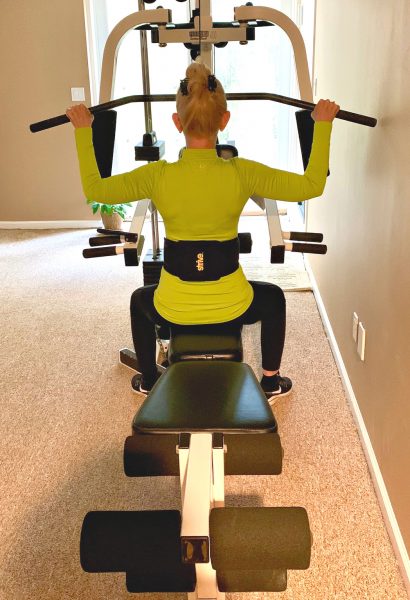
ANTI-INFLAMMATORY TREATMENTS
Groundbreaking! Please be aware, anything that decreases inflammation will also delay the healing process.
THE MECHANISM OF INFLAMMATION
Post-injury, the body releases “proinflammatory mediators” such as prostaglandins and histamine into the area. This flooding creates warmth, edema, and pain. However, the process is necessary for myofiber repair and eventual muscle regeneration (Jarvinen et al., 2005). Therefore, use traditional anti-inflammatory measures prudently.
ICE
After an acute injury, icing for 24 to 48 hours is still the recommended course. Not only will it control capillary leaking (bleeding), it will dull the pain. Drug-free. The preferred methods of applications are:
- Use a commercial ice pack like the STRIVE Hot + Cold Compression Wraps
- Never use an ice pack for more than 15 minutes
- Insulate with a protective cloth to prevent skin burns
MEDICATION
Anti-inflammatories can certainly help relieve pain and control inflammation. They include over-the-counter pain relievers such as aspirin or ibuprofen. (You may commonly know these as Motrin, Advil, and Nuprin.) These non-steroidal anti-inflammatories (NSAIDS) shrink dilated blood vessels. Thereby decreasing pain and subsequent swelling. (They also may cause gastrointestinal irritation!) Unfortunately, these meds also block the body’s natural response to injury (Bancos et al., 2009). Therefore, periodic and short-termed usage is advised.
HEAT
Among the remedies for when you overdo your exercise regime is warmth. Generally, heat increases blood flow to the affected area by dilating blood vessels. This influx has a variety of benefits:
- flushes away injury debris
- delivers oxygen and nutrients for healing
- heat receptors block pain receptors
- increases tissue elasticity
So, heat is best for morning stiffness, achiness due to muscle overuse, muscle spasm, and relaxation. I particularly am impressed with the STRIVE Therapy Wraps that allow for heat and/or cold use. I have used mine to heat my back prior to a workout (see above). Afterward, I apply the cold as I “cool down.” All without the need for purchasing multiple devices!
COMPRESSION
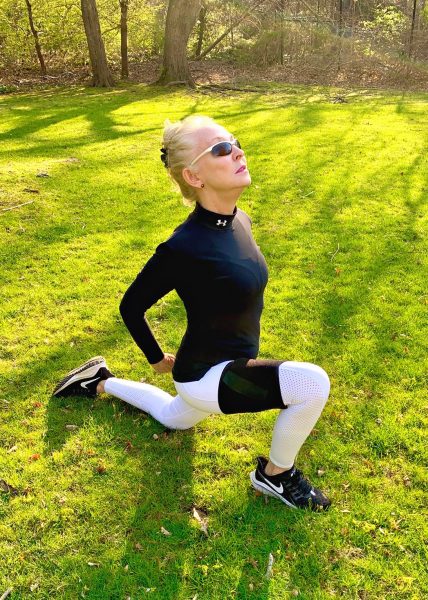
Compression is another tool for exercise recovery. Whether strength training, performing the metabolic exercise (swimming, running, cycling), or post-injury, there is science behind the benefit of compression therapy. In a meta-analysis, it was found to exhibit metabolite removal (think lactic acid) and accelerating nutrient delivery. Thereby delaying muscle soreness and/or damage (Brown et al, 2020). Once again, the increased blood flow afforded by compression garments or wraps advances healing.
Enter my Strive Compression Wraps. Strive Products are developed by the physician and former NASA astronaut Scott Parazynski. Inspired by the materials and technology used in temperature-controlled spacewalk suits, these wraps employ “far-infrared therapy or FIR.”
Infrared is a type of light that is invisible to the eye. “Far” refers to where the energy wavelengths fall on the light spectrum. And since FIR is the longest, they are the coolest. This makes them safe for medical use. You may have heard of FIR saunas. Or even Tom Brady’s FIR recovery pajamas!!
Strive’s far-infrared compression wraps use ‘proprietary non-toxic, “green” compound of micro-crystals that captures and emits your naturally produced far-infrared energy and sends it back into your body.’ Studies indicate these waves penetrate 4 centimeters into the tissues. This results in “accelerating recovery of skeletal muscle function after exercise, increasing the flow of blood and the lymphatic vessels, improving endothelial function and decreasing pain, inflammation and oxidative stress (Loturco et al., 2016). Certainly, this qualifies as a remedy for when you overdo exercise regimes.
These fully-adjustable straps, wraps, and supports offer compression and/or heat and cold therapy while you stay on-the-go. Strive Products can keep you moving, healing, and excelling. Restoration is a wrap away!
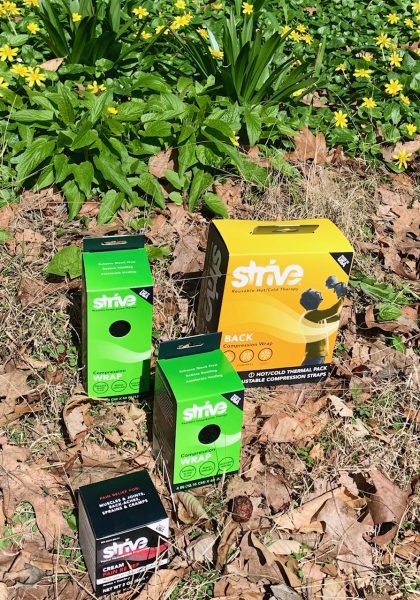
ELEVATION
Do you notice overt swelling? The elevation is the way to go. “Effusion” is a natural byproduct of injury. As discussed, it is often the body’s first step towards healing. However, in my experience, once a body part becomes fluid-filled, movement and pain-reduction are challenged. (For severe swelling, please consult your doctor to rule out a more serious injury.)
- Place the involved limb above the level of your heart to allow gravity to drain the affected area
- Do this immediately post-injury for best results
- Rest for 15-20 minutes
- Perform ankle/wrist circles to greater aid fluid migration
- Attempt this several times daily
OTHER REMEDIES FOR WHEN YOU OVERDO YOUR EXERCISES
There are other less-emphasized treatments for exercise injury. They include:
DIET
Protein has been shown to impact muscle repair. This is particularly valuable after resistance exercise. Therefore, during recovery, consuming significant amounts of lean protein is advisable. Nuts, peanut butter, whey protein shakes, chicken breast, or turkey, may stimulate protein synthesis (Weinert, 2009). When possible, add a protein source with every meal and snack. Drink adequate amounts of water. This will aid in the “flushing” of toxins.
SLEEP
When attaining periods of non-REM sleep, the following occurs:
- Blood pressure lowers
- Breathing becomes deeper
- Little active brain activity takes place
- Blood is more available to the muscles
- Increased oxygen and nutrients are delivered to injured soft tissues/muscles
- Tissue cells are regenerated
TOP PT TIP FOR RESUMING EXERCISE
Active recovery is the best practice for resuming your exercise routine. The hows can be nuanced and of course, vary from person to person. And injury to injury.
- Since overuse injuries occur from the extremes of repetition, change things up. If you run, insert a cycling, swimming, or elliptical workout during the week.
- Take frequent dynamic stretch breaks.
- If you are new to exercise, ease into your routine. Only increase intensity and frequency as you adjust. Pain-free.
- Alternate daily strengthening regimes between upper and lower body. And muscles of opposing groups.
- Follow high-intensity exercise days with a day of rest. And then a day of lower-intensity workout.
- Maximize your warm-up and cool-down routines.
- Address strength and flexibility imbalances.
Again, if the remedies you use for when you overdo your exercise routine are not effective, please seek evaluation by a healthcare professional.
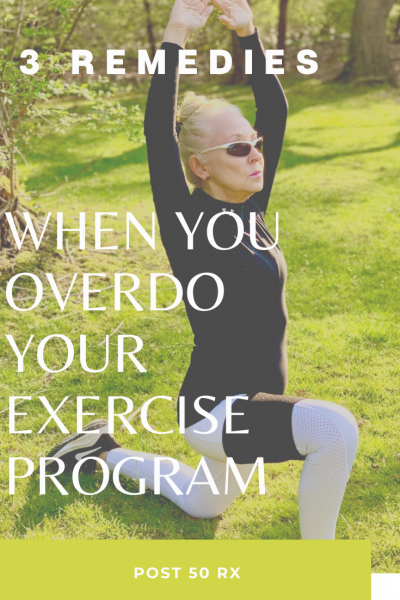
REFERENCES
Bancos, S., Bernard, M. P., Topham, D. J., & Phipps, R. P. (2009). Ibuprofen and other widely used non-steroidal anti-inflammatory drugs inhibit antibody production in human cells. Retrieved from https://www.ncbi.nlm.nih.gov/pmc/articles/PMC2693360/#R26
Brown F, Gissane C, Howatson G, van Someren K, Pedlar C, Hill J. Compression Garments and Recovery from Exercise: A Meta-Analysis. Sports Med. 2017;47(11):2245‐2267. doi:10.1007/s40279-017-0728-9
Delcour, L., Dallaudière, B., Omoumi, P., Kirchgesner, T., Berg, B. V., Cyteval, C., & Larbi, A. (2014). Delayed onset muscle soreness. Journal of the Belgian Society of Radiology, 97(5), 313. doi:10.5334/jbr-btr.1339
Järvinen TA, Järvinen TL, Kääriäinen M, et al. (2005). Muscle injuries: biology and treatment. Am J Sports Med. (33) 745-764.
Loturco, I., Abad, C., Nakamura, F. Y., Ramos, S. P., Kobal, R., Gil, S., Pereira, L. A., Burini, F., Roschel, H., Ugrinowitsch, C., & Tricoli, V. (2016). Effects of far infrared rays emitting clothing on recovery after an intense plyometric exercise bout applied to elite soccer players: a randomized double-blind placebo-controlled trial. Biology of sport, 33(3), 277–283. https://doi.org/10.5604/20831862.1208479
Mirkin, G. (2015, September 16). Dr. Gabe Mirkin. Retrieved May 17, 2020, from https://www.drmirkin.com/fitness/why-ice-delays-recovery.html
Overuse Injuries. (n.d.). Retrieved May 13, 2020, from https://www.hopkinsmedicine.org/health/conditions-and-diseases/overuse-injuries
Weinert, D. J. (2009, August). Nutrition and muscle protein synthesis: a descriptive review. Retrieved from https://www.ncbi.nlm.nih.gov/pmc/articles/PMC2732256/




